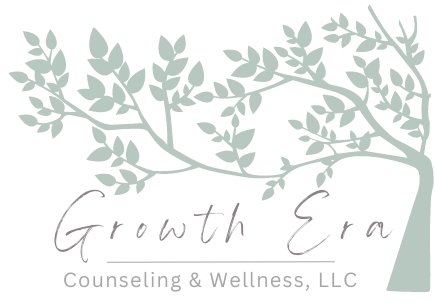Grief Is the Loudest Silence: Healing Invisible Losses
By: Growth Era Counseling & Wellness
Grief is strange — the silence it leaves behind often hurts louder than any noise ever could.
Many people believe grief begins the day someone dies — when the phone rings, when the breath stops, when the world shifts in an instant. But often, grief begins long before the final goodbye. It can begin quietly, in the spaces between what once was and what will never be again.
The Invisible and Ambiguous Losses
Not all grief is tied to death. Some of the hardest losses are the ones that no one sees — the ambiguous losses that don’t have a clear ending or public ritual of mourning.
These include:
Grieving someone who is physically present but emotionally absent — through dementia, addiction, or estrangement.
The loss of identity that can come after a divorce, job change, chronic illness, or infertility.
Watching a loved one’s personality shift due to illness or mental health struggles.
The quiet ache of friendships that fade without explanation.
The future you imagined — the one that will never unfold the way you hoped.
These are the griefs that often go unspoken because they don’t fit the traditional definition of “loss.” There’s no funeral, no closure, no socially acceptable script for mourning. Yet, they can cut just as deeply.
The Hidden Weight of Living Loss
Invisible grief can feel disorienting. People often struggle to name what they’re feeling because the loss is ongoing or undefined. You may still see the person you miss, still share space with them, but feel like they’re already gone in some essential way.
For example, a parent watching their child drift away into addiction might say, “My child is still here, but I can’t reach them.” A partner caring for a loved one with dementia might grieve the shared memories that fade with each passing month. Someone facing infertility might grieve the family they imagined — the life they planned but can no longer have.
These are all forms of grief — just quieter ones. The world keeps moving, unaware that something inside you has shifted forever.
The Realities of Living With Grief
Whether the loss is visible or invisible, many of the same realities emerge:
The loss of a unique emotional support system.
Feeling isolated from those who cannot relate.
Waves of grief that come without warning.
The struggle to find language for something that feels both permanent and in-between.
The physical and emotional exhaustion that grief brings.
Guilt for still grieving “something that hasn’t really ended.”
Family bonds that shift — sometimes strengthening, sometimes straining.
The realization that life keeps moving forward, even when you’re not ready.
Grief doesn’t always announce itself loudly. Sometimes it whispers through fatigue, irritability, or detachment. Sometimes it hides in the spaces where laughter used to live.
Growing Around Grief
One of the most compassionate ways to understand these experiences is through the Growing Around Grief model, developed by Dr. Lois Tonkin.
This model rejects the common belief that grief shrinks or fades with time. Instead, it suggests that grief remains — but our lives grow around it.
At first, grief fills everything. It’s hard to imagine anything else existing alongside it. But as time passes, new experiences, connections, and moments of meaning begin to grow — not by replacing the grief, but by expanding around it.
This perspective offers permission to stop chasing closure. It honors the ongoing nature of love and loss — the reality that you don’t “get over it,” but you can build a life that includes it.
There will still be days when grief feels as raw as it did in the beginning. But there will also be moments of laughter, purpose, and even joy. For some, this can bring guilt, as if moving forward means being disloyal. Yet, Growing Around Grief reminds us that love and loss can coexist. You can carry the ache and still create a meaningful, hopeful life.
Finding Support in the Silence
Grief is often the loudest silence — a companion we carry quietly. It can affect every part of life: emotional, physical, relational, and spiritual. Too often, people feel they have to face it alone or that their pain “doesn’t count” because it doesn’t fit society’s image of mourning.
But every loss deserves space. Every form of grief deserves to be witnessed and understood.
Therapy provides that space — a safe, compassionate environment to explore your grief, to understand how it shapes your identity, and to rediscover your capacity for connection and meaning.
Because grief doesn’t always mean an ending. Sometimes, it’s the beginning of a new way of being — one shaped by both love and loss.
If you’re finding your grief overwhelming, we’re here to help. You don’t have to navigate the silence alone.


